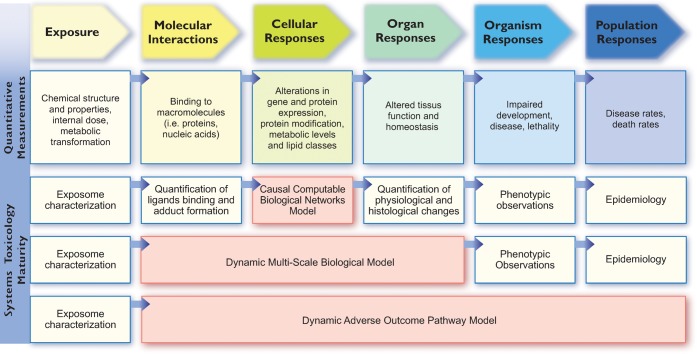Figure 2.
Steps that define the Systems Toxicology paradigm, from biological network models to dynamic adverse outcome pathway (AOP) models. The development of dynamic AOP models enabling the simulation of the population-level effects of an exposure is the ultimate goal of Systems Toxicology. This development follows three broad steps of maturity from top to bottom. The first level consists of the development of causal computable biological network models that link the system’s interaction of a toxicant with the organ-level responses. Such models can be used to quantify the biological impact of an exposure in the context of quantifiable end points such as histology or physiological measurements. In a second step, as more mechanistic knowledge derived from quantitative measurements accumulates, dynamic models linking the exposure with the organ-level responses can be developed. Ultimately, the third level of maturity is reached when the link between the exposure and the population outcome can be represented by mathematical models that enable the simulation of population-level effects of an exposure. Blue arrows denote causal links, which are mainly derived from correlative studies. Artwork by Samantha J. Elmhurst (www.livingart.org.uk).

